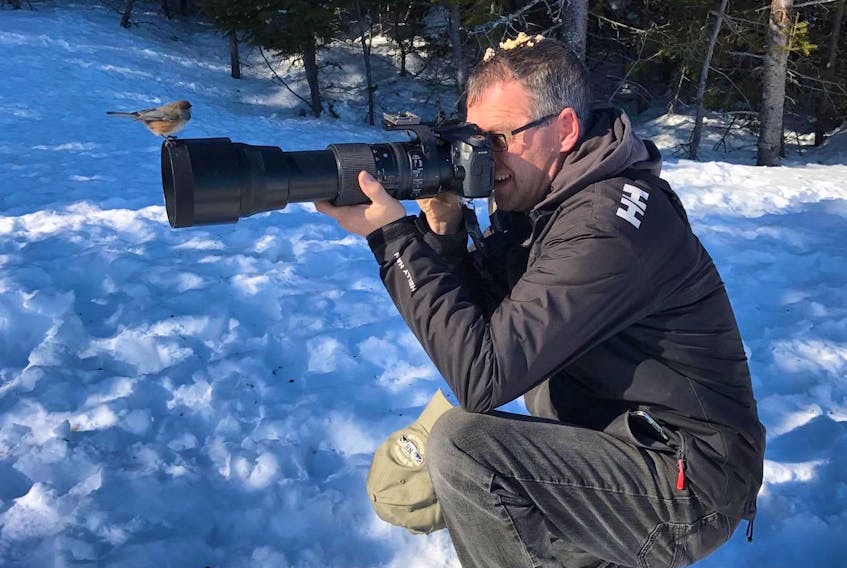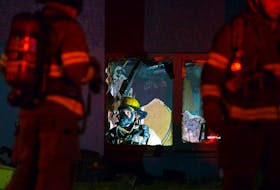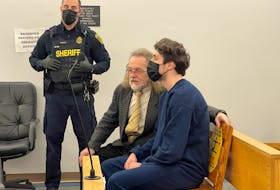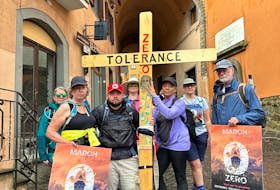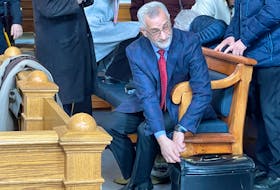For Vernon Buckle, the best way to go for a walk is very slowly.
“I’ve never had a boring walk,” he says.
Buckle is an emergency medical responder with the ambulance service in Forteau, Labrador. He’s also a cabinet maker with his own shop, but most people know him as the “Bird Man.”
“I work alone, so if a bird shows up that’s of interest, I go looking for that, or if the pager goes off, I go to work with the ambulance, too.”
However, when you talk to Buckle, it’s clear his real passion is for birds.
In Forteau, if people see a bird they think is rare or interesting, Buckle is the first person they call.
“I’ve always enjoyed birds,” he says with obvious enthusiasm.
“I really enjoy the behaviour, and just the beauty of birds in particular. I find them very interesting. And the variety! I had no clue that there was so many different species out there that’s regularly in a backyard, and then there’s the rare ones that show up that are most intriguing.”
Buckle says the beauty of birding is that you can do it anywhere.
“You can bird from your front window, you can travel — you can bird anywhere on the planet. So, if you’re bored, get a pair of binoculars and go for a walk. And don’t go for a fast walk. There’s lots of things out there to enjoy. I’ve never had a boring walk.”
Science sticks its beak in
Buckle says what makes it most rewarding is that his hobby also contributes to scientific knowledge.
In the past six years, Buckle has documented roughly 15 new species of birds never before seen in Labrador.
Buckle regularly posts his bird observations on the citizen science website eBird, and he also participates in the annual Breeding Bird Survey, the primary source of long-term, large-scale population data for over 400 breeding bird species in North America.
Citizen science is the practice of public participation and collaboration in scientific research to increase scientific knowledge. Typically, citizen scientists are volunteers with an interest in the field of study, but sometimes it is paid work.
It’s because of the work of citizen scientists like Buckle that wildlife biologist Greg Campbell with the Canadian Wildlife Service has his job.
Campbell says he’s able to focus on studying birds in the boreal forest — far removed from human populations — because birds in populated areas are already well-documented by citizen scientists.
He calls the work of citizen scientists “extremely important.”
In fact, he says most of the data used in reports published by Environment and Climate Change Canada and the United States Fish and Wildlife Service largely comes from citizen scientists. For example, he said more than two-thirds of the species included in last year’s State of Canada’s Birds report had trend information that came from the Breeding Bird Survey and other citizen science programs.
“There’s no way we could have the information that we have without citizen scientists, and I don’t think there’s any way that we could replicate that any other way than with volunteers,” he says.
“It’s such a large-scale thing, especially now when we’re thinking about climate change impacts. And it’s such a big subject and a big topic that there’s nothing that any one group — be that government, or industry or (non-governmental organizations) — there’s nothing that any one or two, or even five or six groups can do together. It’s such a huge problem, you need everybody.”
Growing popularity

Luckily, there are plenty of citizen scientists out there doing that work. While there’s no hard data on numbers of citizen scientists in the province, Campbell said he’s seen the hobby explode in the past five years in terms of the number of participants.
Nationally, World Wildlife Fund (WWF) Canada is also seeing growth in the popularity of its citizen science-based programs.
WWF-Canada vice-president of restoration and regeneration Liz Hendricks says they began putting greater emphasis on citizen science after the release of their first watershed report in 2017.
Hendricks says the report showed they didn’t know the health of many of Canada’s watersheds because either governments weren’t sharing the information, or it wasn’t available.
“That's when we really were like, citizens are actually the best placed people — especially in a changing climate — to be able to respond quickly in different circumstances to understand what’s happening in their backyard.
“And so then we began investing more in citizen science, and have really seen that it’s changed how we can assess the health at a larger scale, which is pretty cool. In just three years now we have results for certain watersheds that we didn’t before because we invested in citizen science.”
She says many citizen science initiatives at WWF-Canada started as simply a way to get people outside and to educate.
“But really, over the past seven years, it’s been really focused on making sure we’re measuring as well, and monitoring.”
Over time, their number of citizen science-based projects has blossomed to include a wide range, from mapping caplin spawning locations to studying garden biodiversity.
SATURDAY — Part 2: With citizen science, we return to our roots

